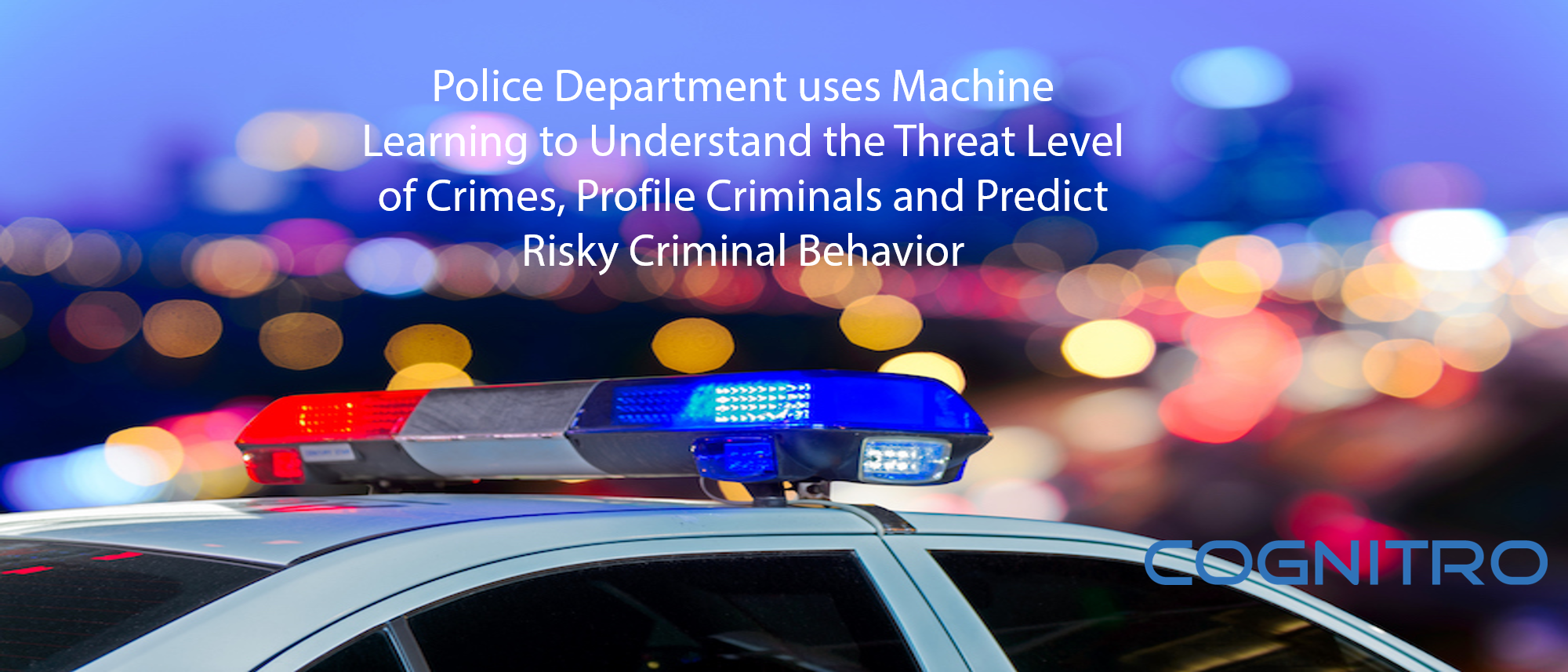
24
Jul
Preemptive Crime Management & Control
Clear visibility on the seriousness of crimes, profiling of offenders patterns and accurate prediction of criminal acts provides tremendous benefits to national safety and security. For law enforcement, it allows effective planning, deployment and policing. For immigration and law makers, it helps decision makers in enacting the right policies to restrict potential criminals of certain demographic background from entering the country and crafting effective measures of security screening and clearance.
GBU: A Holistic Approach
Working with a client, Cognitro team engaged the police department in a set of activities that led to the development of an interactive tool dubbed GBU (The Good, the Bad and the Ugly).
1. Crime Severity Index (CSI)
We utilized sentencing data f or each crime as a proxy to quantify each relevant crime, reflecting the potential security risk or harm (and criminals) on society, whereby each crime will have a set weight. For example running a red light will have a weight of 0.01 while stabbing will have a weight of 100. The criminal score for each individual will then be a weighted average of the number of crimes.
or each crime as a proxy to quantify each relevant crime, reflecting the potential security risk or harm (and criminals) on society, whereby each crime will have a set weight. For example running a red light will have a weight of 0.01 while stabbing will have a weight of 100. The criminal score for each individual will then be a weighted average of the number of crimes.
2. Crime Segmentation
Using the CSI, we developed a segmentation scheme to cluster all individuals based on their score and identified groups of criminals based on similarities across several crimes. This allowed us to isolate and contextualize the criminal risk of each group and then to score any new individual based on propensity to belong to one of these groups.
3. Criminal Profiling
Using demographic and behavioral data, we developed a profile for each criminal segment detailing dominant trends and persisting patterns associated with each group to better understand drivers and motivations (e.g., check bouncing come from males, 35-40, real-estate sector, etc..)
4. Criminals Prediction
Using demographic data, travel behavior, income levels, career movements and in-country and cross-orders travels, we were able to classify criminal & non-criminal behavior into one of the crime segments and assigning a risk score that reflects the potential criminal liability to society.

The Holy Grail of Crime Analytics
- A key finding of the project was the discriminatory power of the model for differentiating more severe criminal acts from lighter ones. The results demonstrate that the main factors behind criminal tendencies include 1) the frequency at which serious offenders commit serious acts (the number of serious offences committed by a person each year); 2) the persistence (or duration) of serious offences’ histories of committing violent acts (e.g., length in years from the commission of the first act of lighter offences to the last act of offence); and the seriousness (or harmfulness) of the acts committed by individuals (e.g., extent of physical harm inflicted).
- To operationalize the model, we developed an interactive GBU dash-board tool with all analytics functionalities. The main embedded features include: 1) Tracking the crime severity index for the country across time, benchmarking performance from year to year, and understanding relevant constituents. 2) Generating a crime cost for each offender and grouping of offenders based on similarities along with top 5 crimes influencing each group and 3) Scoring new records of individuals with demographics and historical data.
The Verdict
Despite that it is well established fact that gender, age structure, migration (demographic changes) have their mutual influence not only on the economy, system of power, education, health protection and religion, but also on crimes, our findings clearly demonstrate that “Who you are, What you do and where you travel does tell much about how high likely you are to be harmful to society”
References
- The influence of socio – economic factors on crime, Grzegorz Pieszko, Ph.D1, 1Wyższa Szkoła Społeczno – Gospodarcza z siedzibą w Przeworsku, Poland
